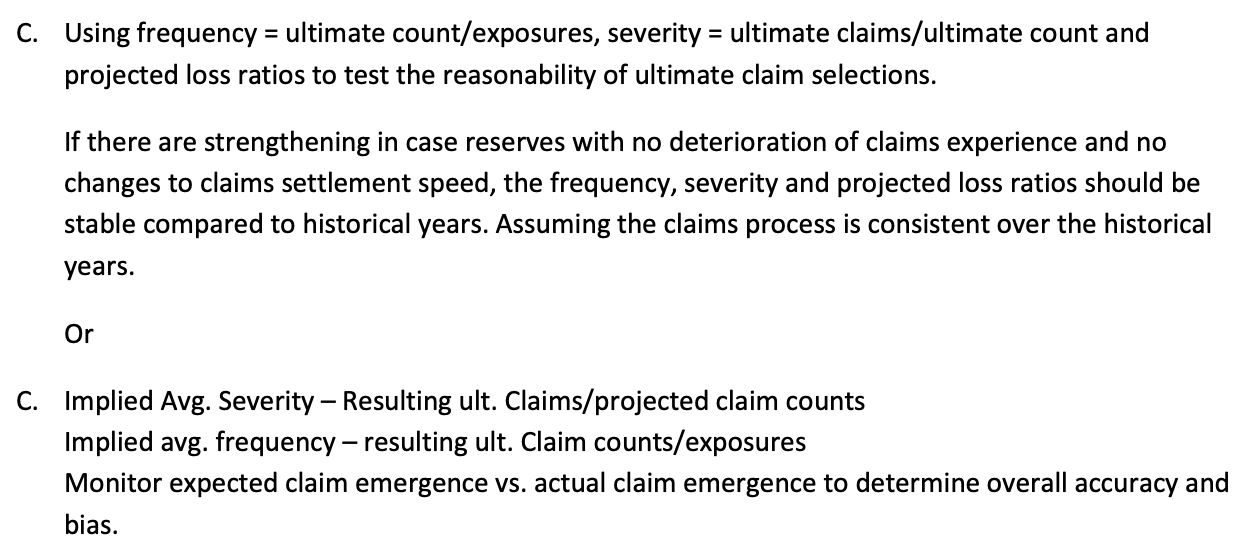Fall 2013 Q23 c)
I am not quite understanding the solution to this question. I think I might have a better shot at understanding the first sample answer.
Firstly, are these three diagnostic tools specifically referring to Q23? i.e. these are useful diagnostic tools ONLY in the context of increasing case reserve adequacy with everything else stable.
Also, regarding the three diagnostic tools, my understanding is that frequency should be stable because counts and exposures are unaffected by changes in case reserves. However, I do not understand why severity and projected loss ratios are stable despite changes in case reserves. Wouldn't a change in case reserves affect ultimate claims (used in severity) and reported loss (used in reported loss ratio)?
Thank you!


Comments
These diagnostic tools are valid in other circumstances, not just testing for changes in case reserve adequacy in this particular question.
If the only deviation from stability is a strengthening of case reserves then the ultimate loss (and severity) would not change. A strengthening of case reserves means that your reported loss triangle would have higher values, but this would (eventually) be offset by your LDFs being lower so that you get to the same result.
In other words, you have to understand the difference between the final result of the estimate of ultimate and the data that you're given. In the scenario of case reserve strengthening, that's an operational change within the company that affects the reported loss triangle but has no effect on the severity of accidents that people might have in the real world.
So to be specific, these diagnostic tools can also be applied when there is a change in settlement rate? Even with a change in settlement rate these 3 diagnostics would produce stable results?
And what about a change in the mix of business?
Are you saying that the events I listed above are operational changes, but not changes that are occurring in the real world, so despite how the methods used to estimate ultimates may be affected, the true ultimate (which is hopefully reflected in the estimated ultimate) would still be the stable?
The answers to your questions are basically: YES.
The diagnostics you use depend on the circumstances so there is no step-by-step method that works in all circumstances. You can calculate any diagnostic you want using the data you're given, then you have to interpret the diagnostics appropriately.
For more specific suggestions regarding diagnostics in different circumstances, please refer to chapter 6 wiki for the reserving material:
You also can find all available videos for chapter 6 (and other chapters) here: